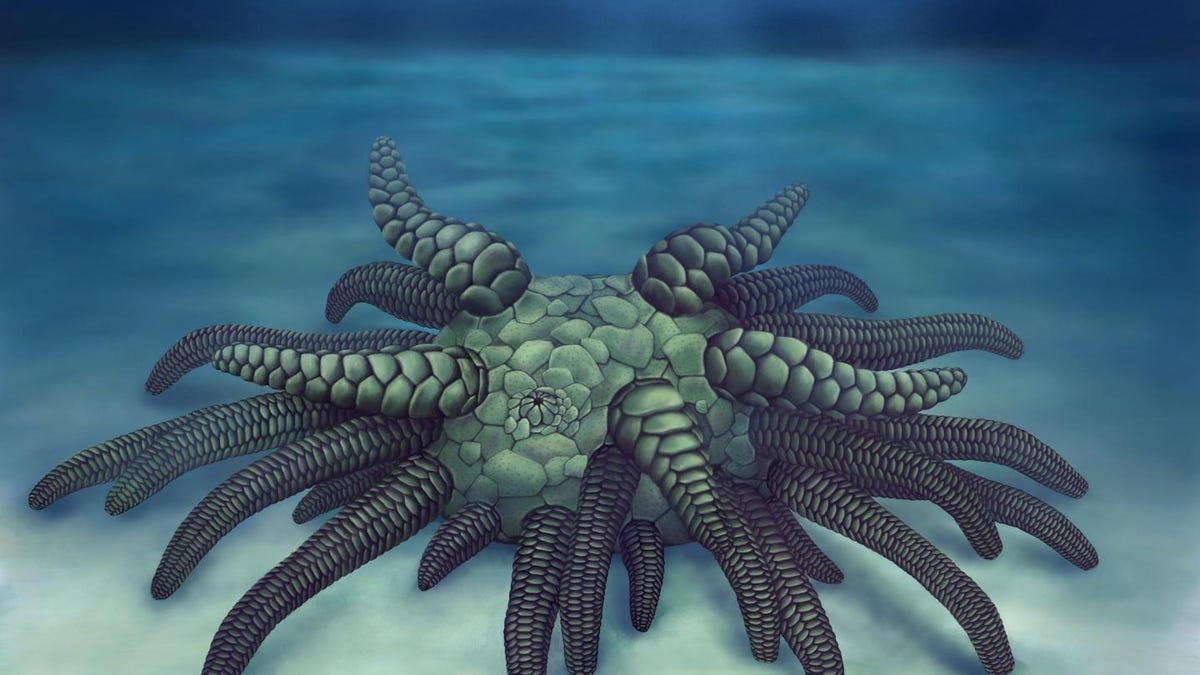Scientists discover Cthulhu sea cucumber that terrorized oceans 430 million years ago
Behold the Great Old One, over there next to the seaweed.

This is what Sollasina cthulhu would have looked like on the seafloor.
Scientists have discovered a new species of ancient sea cucumber after creating a 3D computer reconstruction of the creature from a 430-million-year-old fossil.
The discovery was made by a team of international paleontologists, led by the Oxford University Museum of Natural History, using a fossil discovered in a site in Herefordshire, England. After reconstructing the image of the tentacled creature from the fossil, the team dubbed the species Sollasina cthulhu, after the terrifying monster Cthulhu from H.P. Lovecraft lore.
Researchers ground the fossil, layer by layer, to create a 3D reconstruction of Sollasina cthulhu (the tube feet are shown in different colors).
The team at Oxford created the 3D image by grinding away thin layers of the fossil, taking individual photographs at each stage to create a "virtual fossil."
The creature had multiple "tube feet" tentacles that it used to crawl over the seafloor and capture food, according to the research team. The 3D render also revealed an internal ring -- a first-time discovery for this group of extinct creatures -- that most likely formed part of a vascular system of "fluid filled canals" the creature used to move and feed.
While the fossil is only 3cm wide (just over 1 inch), researchers say "its many long tentacles would have made it appear quite monstrous to other small sea creatures alive at the time."
The research was published in Proceedings of the Royal Society B and conducted by researchers from Oxford University Museum of Natural History, University of Southern California, Yale University, University of Leicester and Imperial College London.

